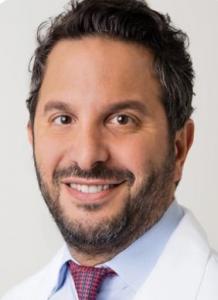LabFinder CEO Dr. Robert Segal explains varying purposes of breast screening tools
— Dr. Robert Segal
NEW YORK, NY, UNITED STATES, June 13, 2023/EINPresswire.com/ — Millions of American women undergo mammograms every year. But some of them seek the imaging test to screen for breast cancer, while others have mammograms for diagnostic purposes. What’s the difference? It’s a common question, says Robert Segal, MD, co-founder and CEO of LabFinder, an online scheduling platform for patient laboratory and radiology appointments.
About 350,000 women will be told they have breast cancer in 2023, according to the American Cancer Society (ACS). And mammograms—which are done at imaging centers or hospitals—are the most commonly used tool to detect breast cancer in women. (https://rb.gy/c0n61) These x-rays of the breast are considered the best way to find breast cancer early and when it’s easier to treat. Nearly 44,000 women die of breast cancer each year, the ACS says. (https://rb.gy/c0n61)
“Screening mammograms are performed in women who don’t have signs of breast cancer, but want to catch it early if it develops,” Dr. Segal explains. “Diagnostic mammograms, on the other hand, are performed if a woman has symptoms of breast cancer, such as a lump or changes in the skin or thickness of breast tissue. Mammogram testing is often repeated in these women to definitely diagnose the disease or rule it out.”
Array of breast imaging tools
Mammograms are the primary form of breast cancer screening that women undergo, boasting highly effective results. Screening mammograms lower breast cancer death rates in women 40 and older by 40% when compared with no screening, according to the National Institutes of Health.
As useful as mammograms are, however, they’re only part of the picture if a woman is considered at higher risk of breast cancer or once the disease is suspected. Other imaging tools, including ultrasound and breast MRI (magnetic resonance imaging), may be combined with mammography to help diagnose breast cancer since each tool offers specific advantages, Dr. Segal says.
Dr. Segal offers a breakdown of each tool, as well as its pros and cons
Mammograms: Digital mammography captures views from several angles of the breast using low-dose x-rays. Areas appearing white in the resulting images represent glandular tissue, while fatty areas are depicted in black. Mammogram images can be harder to accurately read in women with dense breasts, which means they have a higher proportion of glandular and connective tissue compared to fat. Women with dense breasts are at higher risk of breast cancer, but both dense tissue and cancer show up as white areas on mammograms.
Ultrasound: High-frequency sound waves create images of breast tissue during an ultrasound exam. This imaging tool is considered a supplemental screening method in women with dense breasts, since cancerous areas will stand out by showing up as black on ultrasound, and not white as with mammograms. But ultrasound isn’t typically used as a stand-alone test because it has a high false-positive rate, so it’s usually combined with mammography.
MRI: This imaging blends radio waves with a powerful magnet, and contrast fluid is injected into patients to help “light up” potential cancerous areas. MRI is considered a highly powerful way to detect and diagnose breast cancer, but it’s not generally used for screening purposes since it’s expensive and not widely available.
Finding testing when it’s needed
Dr. Segal helped establish LabFinder.com on the premise that medical tests should be readily accessible and affordable and provide quick results to patients. The LabFinder.com online platform connects patients, doctors, laboratories, and radiology centers for a seamless medical experience; offers timely test scheduling; and serves as a central repository for users’ testing results. Most importantly, test results are released simultaneously to patient and clinician and are often available in as little as 24 hours.
Screening recommendations vary, but most agree that women 40 and older should consider getting mammograms once every year or two for breast cancer detection. Women should ask their doctors about breast cancer screening and to seek help scheduling an appointment.
“Any woman who is experiencing possible breast cancer symptoms should immediately ask for a mammogram and/or other breast imaging to confirm a breast cancer diagnosis or rule it out,” Dr. Segal says. “Using a system like LabFinder can also help make this process as streamlined and stress-free as possible.”
Bio: Robert Segal MD, board-certified in cardiovascular disease, echocardiography, and nuclear cardiology. He is founder of Manhattan Cardiology and Medical Offices of Manhattan, and Co-Founder of LabFinder. https://www.labfinder.com/
About: LabFinder is a consumer-facing platform that transforms the patient experience through seamless lab & radiology testing, guiding patients to conveniently located testing centers, handling appointment bookings, offering telehealth services, and allowing patients to review their test results all in one place. LabFinder supports patients through their care journey from booking to billing—reducing expenses, hurdles, and frustrations. www.labfinder.com.
Contact: www.mcprpublicrelations.com
Melissa Chefec
MCPR, LLC
+1 203-968-6625
[email protected]
![]()
Originally published at https://www.einpresswire.com/article/639060451/understanding-the-difference-between-screening-vs-diagnostic-mammograms
The post Understanding the Difference Between Screening vs. Diagnostic Mammograms first appeared on Beauty Ring Magazine.
Beauty - Beauty Ring Magazine originally published at Beauty - Beauty Ring Magazine




